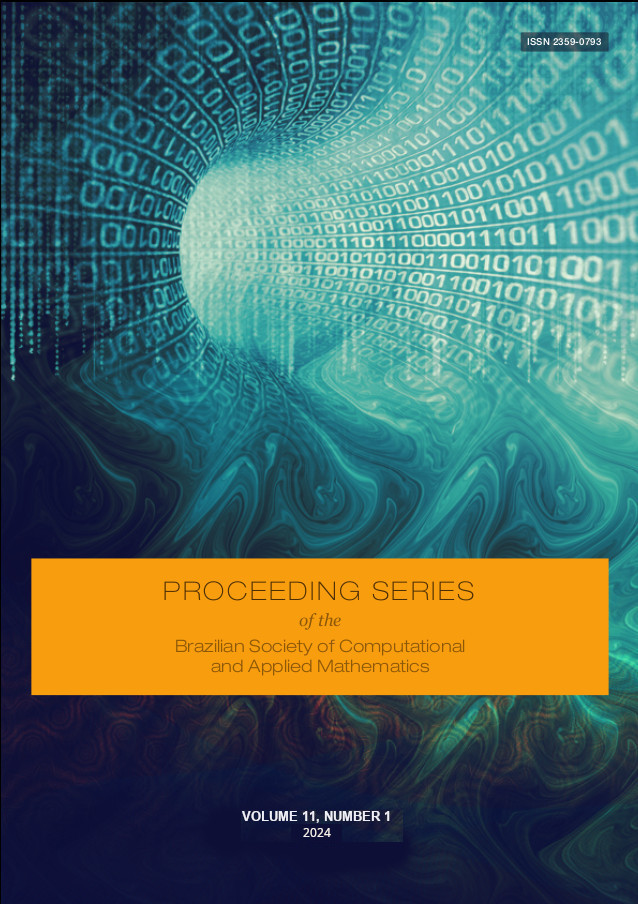Machine learning topology of Calabi-Yau links
DOI:
https://doi.org/10.5540/03.2025.011.01.0422Palabras clave:
G2-manifolds, contact Calabi-Yau manifolds, machine learning, Hodge numbers, Crowley-Nördstrom invariantResumen
Calabi-Yau links arise as special sphere fibrations over Calabi-Yau manifolds. In the 7-dimensional case, the links exhibit Sasakian and G2 structures. In this summary, previous work is revisited, where machine learning and data science techniques are used to study topological quantities related to the Sasakian and G2 geometries of contact Calabi-Yau 7-manifolds. Particularly, properties of the respective Gröbner bases are well-learnt, and machine learning of those further induced novel conjectures to be raised.
Descargas
Citas
B. Acharya and S. Gukov. “M theory and singularities of exceptional holonomy manifolds”. In: Physics Reports 392.3 (2004), pp. 121–189.
B. Acharya and E. Witten. “Chiral fermions from manifolds of G2 holonomy”. In: (2001). eprint: arXiv:hep-th/0109152v1.
Daattavya Aggarwal, Yang-Hui He, Elli Heyes, Edward Hirst, Henrique N. Sá Earp, and Tomás S.R. Silva. “Machine learning Sasakian and G2 topology on contact Calabi-Yau 7-manifolds”. In: Physics Letters B 850 (2024), p. 138517. issn: 0370-2693. doi: 10.1016/j.physletb.2024.138517. url: https://www.sciencedirect.com/science/article/pii/S0370269324000753.
Imran Ahmed. “Weighted homogeneous polynomials with isomorphic Milnor algebras”. In: Journal of Prime Research in Mathematics (2012).
Ross Altman, Jonathan Carifio, James Halverson, and Brent D. Nelson. “Estimating Calabi-Yau hypersurface and triangulation counts with equation learners”. In: Journal of High Energy Physics 2019.3 (Mar. 2019). issn: 1029-8479. doi: 10.1007/jhep03(2019)186. url: http://dx.doi.org/10.1007/JHEP03(2019)186.
James A Anderson. An introduction to neural networks. MIT press, 1995.
Anthony Ashmore, Yang-Hui He, and Burt A. Ovrut. “Machine Learning Calab-Yau Metrics”. In: Fortschritte der Physik 68.9 (Aug. 2020), p. 2000068. doi: 10.1002/prop.202000068.
Per Berglund, Yang-Hui He, Elli Heyes, Edward Hirst, Vishnu Jejjala, and Andre Lukas. “New Calabi-Yau Manifolds from Genetic Algorithms”. In: (June 2023). arXiv: 2306.06159 [hep-th].
C. P. Boyer and K. Galicki. Sasakian geometry. Oxford Mathematical Monographs. Oxford University Press, Oxford, 2008, pp. xii+613. isbn: 978-0-19-856495-9.
O. Calvo-Andrade, L. Rodríguez, and H. N. Sá Earp. “Gauge theory and G2-geometry on Calabi-Yau links”. In: Rev. Mat. Iberoam. 36.6 (2020), pp. 1753–1778. eprint: 1606.09271[math.DG]. url: https://www.ems-ph.org/journals/show_pdf.php?issn=0213-2230&vol=36&iss=6&rank=6.

